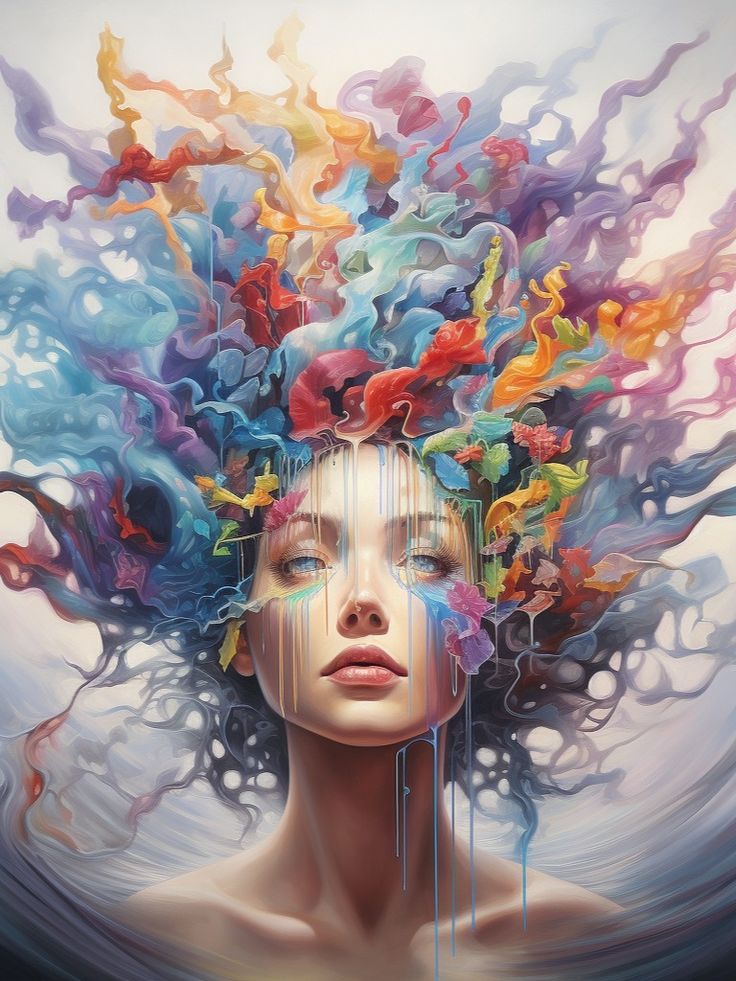Modern life, full of stress and physical activity, can lead to depletion of our vital energy. Art therapy as one of the types of art therapy is indispensable in restoring spiritual strength and is an important aspect of maintaining health and well-being, writes WomanEL.
ContentWhat is art therapyDefinitionFounder of art therapyArt therapeutic techniquesHow practice helps restore energyMandalaSymmetrical drawings and flowersLandscapesNature motifs Art against disease. Source: pinterest.com
Art against disease. Source: pinterest.com
What is art therapy
Definition
Art therapy is a branch of psychotherapy that uses the creative process to improve and enhance physical, mental and emotional well-being. It is based on the belief that creative expression helps people resolve conflicts and problems, develop interpersonal skills, manage behavior, reduce stress, and increase self-esteem and self-awareness.
Founder of art therapy
Founder direction is Adrian Hill, a British artist who lived in the twentieth century. In the late thirties, while being treated for tuberculosis, he discovered that drawing made him feel better.
The definition of “art therapy” was first used by Hill in 1942. His book “Art Against Disease” was published in 1945.
Any type of art can have a beneficial effect on the condition of patients. You can not only draw or sculpt from plasticine, but also burn wood, lay out mosaics, do sewing, knitting, and embroidery. Everything depends only on the financial capabilities of the patients and the clinic.
 Art therapy as one of the types of art therapy. Source: pinterest.com
Art therapy as one of the types of art therapy. Source: pinterest.com
Art therapeutic techniques
Artistic psychotherapeutic techniques are a valuable addition to the diagnosis and treatment of depression. Creative activity provides a sense of control and empowerment for people who may feel helpless and powerless in the face of illness or injury.
The process of creating something can restore a sense of will, purpose and joy in the outcome of the activity, which may be especially important in the treatment of depression.
Drawing allows people to express themselves creatively and also provides a sense of control and focus. This can be a meditative and relaxing activity that distracts the mind from stressors and helps reduce anxiety.
The most common art therapy techniques:
- making collages;
- doodle or doodle;
- sketching;
- painting;
- finger painting;
- photography;
- making sculptures;
- clay modeling.
< li>coloring;
How practice helps restore energy
Sources of vital energy can be varied, both provided by nature and the inner world of a person. To relieve stress and renew vital energy, psychologists advise using any type of creative activity.
Drawing is one of the most accessible and effective types of art therapy. You can depict all your desires and dreams, your mood, erase or paint over all your problems, obstacles and illnesses.
Drawing provides a unique opportunity to engage with emotions in a tangible way, offering a path to restoration, self-expression and emotional resilience. Regardless of creativity and skill, therapeutic drawing does not require skill. That's why painting can be incorporated into your emotional wellness practice to support and enhance your mental health and energy journey.
 Mandala opens up the possibility of spiritual growth of a person. Source: pinterest.com
Mandala opens up the possibility of spiritual growth of a person. Source: pinterest.com
Mandala
An excellent practice for restoring vitality is mandala, which means “magic circle”. It helps to provoke the main internal sources of the deep levels of the subconscious, including self-regulation mechanisms. When depicting a circle, a limit emerges that protects physical and mental space, releasing energy.
There are no specific rules for drawing mandalas. You can draw them on separate sheets of paper, or you can keep a special notebook or album. Draw in a circle everything that comes out of your soul and heart.
Spontaneous work with color and shape inside a circle helps to change a person’s state of consciousness. This practice causes various psychosomatic phenomena and opens up the possibility of spiritual growth of a person.
Symmetrical patterns and flowers
Symmetrical designs are great for restoring emotional balance and help in restoring emotional harmony and balance. Drawing flowers can be calming and restorative, allowing you to focus on beauty and nature and forget about fatigue.
Landscapes
If you're feeling stuck or needing a change, painting landscapes can help you move beyond your usual boundaries. . Landscapes will help you quickly recuperate.
Nature motifs
Drawings with natural motifs increase energy. Images of plants, flowers or forest scenes can evoke a feeling of nourishment and growth.
So, art therapy helps you understand and appreciate your feelings, memories, images of the future, find time to renew your vitality and a way to communicate with yourself. Draw – and change your life for the better…
We previously told you whether it is worth contacting a psychologist after traumatic events.

